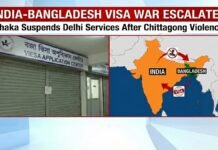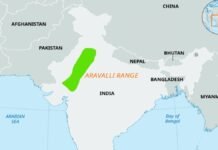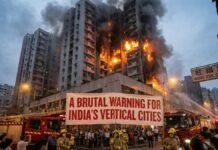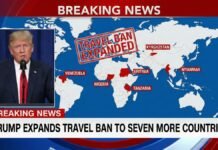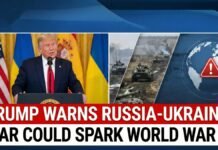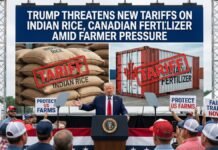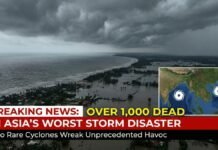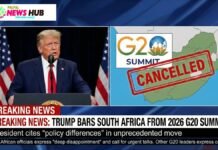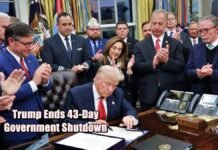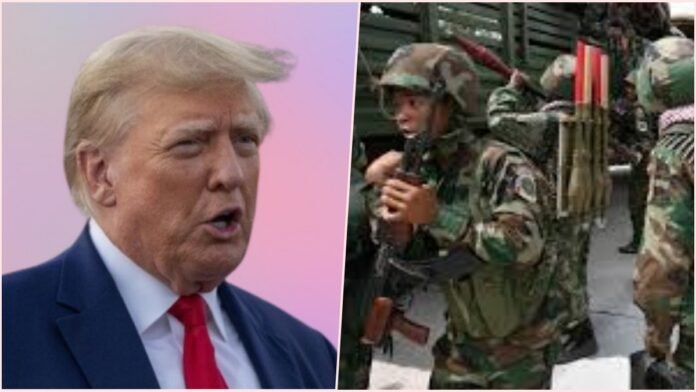
Key Points
- Clashes along the Thailand Cambodia border have left at least 33 dead and more than 168,000 displaced.
- US President Donald Trump’s intervention forced both nations to agree to immediate ceasefire talks.
- Trump warned of trade sanctions, saying no deals would proceed if fighting continued.
- Thailand insists on Cambodian sincerity before a truce; both sides accuse each other of aggression.
- Ceasefire discussions are set to begin, but sporadic fighting continues as humanitarian concerns rise.
New Delhi: A bloody military confrontation on the Thailand–Cambodia border has killed at least 33 people and displaced over 168,000, marking the region’s deadliest escalation in years. After four days of artillery exchanges and airstrikes near disputed temples and villages, US President Donald Trump intervened on Saturday, pressuring both nations’ leaders to seek a rapid ceasefire.
Trump Steps In Trade as Leverage
Announcing his efforts on Truth Social, President Trump revealed that negotiations with Thai acting Prime Minister Phumtham Vechayachai and Cambodian Prime Minister Hun Manet led both sides to agree on immediate talks. “Both sides want an immediate ceasefire and peace,” Trump stated, adding that future trade agreements with the US would be suspended for both nations if violence continued. “There is now a natural path forward toward ceasefire, peace, and prosperity,” he posted, while continuing his visit to Scotland.
Leaders Respond Demands for Sincerity and Direct Dialogue
Thailand’s Phumtham acknowledged the talks but made clear his government seeks “good intentions” and concrete guarantees from Cambodia, including the withdrawal of troops and heavy weapons as conditions for lasting peace. “We support a ceasefire in principle, but Cambodia must provide credible assurances,” Phumtham posted, reaffirming Thailand’s desire for urgent bilateral talks. Cambodia’s Hun Manet agreed to Trump’s proposal and directed senior diplomats to coordinate with both the US and Thailand. Both leaders publicly expressed hopes for peace, even as each side accused the other of violating previous truces and international law.
The Conflict Heavy Weapons, Civilian Toll
Hostilities intensified late last week across multiple sites some near UNESCO heritage temples using artillery, rocket launchers, and, for the first time, Thai fighter jets. Thai officials accused Cambodian troops of targeting civilians and using “human shields,” while Cambodia condemned Thailand’s alleged use of banned cluster munitions and cross-border attacks. At least 15 Thai civilians and soldiers and 13 Cambodians have lost their lives, with dozens wounded on both sides. Shelling and gunfire have damaged villages, schools, and ancient religious sites, forcing mass evacuation on both sides of the border.
Ongoing Skirmishes Despite Ceasefire Talks
Despite Trump’s announcement and leaders’ agreement to meet, fighting erupted again early Sunday morning near the Ta Muen Thom (Ta Kwai/Prasat Ta Krey) temple complex. Both capitals denied responsibility for the renewed shelling, with each military blaming the other for provocation. The United Nations, ASEAN chair Malaysia, and major global powers have called for restraint and a return to peace, but warnings of escalation remain.
What’s Next?
While US mediation has set the stage for ceasefire talks, observers note the road to a durable resolution remains fraught—especially as both sides jockey for advantage before entering negotiations. Trade interests, international pressure, and humanitarian concerns are now central to halting a conflict that threatens to spiral further if not swiftly contained.
Both Thai and Cambodian residents in affected regions have been urged to stay away from the border, and relief organizations are mobilizing food, water, and medical supplies for the tens of thousands displaced.









